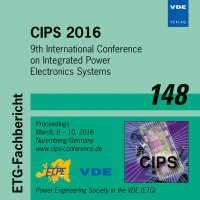Metallurgical structure of lead free solder alloy to improve the reliability of power module
Konferenz: CIPS 2016 - 9th International Conference on Integrated Power Electronics Systems
08.03.2016 - 10.03.2016 in Nürnberg, Deutschland
Tagungsband: CIPS 2016
Seiten: 6Sprache: EnglischTyp: PDF
Persönliche VDE-Mitglieder erhalten auf diesen Artikel 10% Rabatt
Autoren:
Tan, K.-L.; Morelle, J.-M.; Vivet, L.; Lavrentieff, S. (Valeo, Group Electronic Expertise and Development Services, 2 rue André Boulle 94 046 Créteil, France)
Inhalt:
Lead-free solders have garnered much attention for the development of high operating temperature of power electronic applications. Most of commercial high tin content alloys are known to be viable up to 125 °C and fail to meet higher temperature requirements. The main purpose of this investigation is to assess the reliability performance of a quaternary solder alloy (SACSb) relative to the metallurgical structure of the solder joint that involves the precipitation of specific intermetallics compounds (IMC) distributed within tin rich (β-Sn) matrix. The carried out investigation is to define the process parameters to obtain a solder joint with such metallurgical structure. The solder joint micro structure characterization allows observing the evolution of metallurgical structure relative to the soldering process parameters. Other responses are also analyzed such as the wettability of the solder alloy and the voiding rate under the die. The lifetime reliability of the solder joint between the die and the substrate are assessed using thermal shocks with the following test conditions (Tmax +125 °C, Tmin -40 °C, dwell time 20 min). Periodic inspection and micro structure shows a significant improvement in the number of cycles to failures for the test vehicles with the investigated metallurgical structure.


